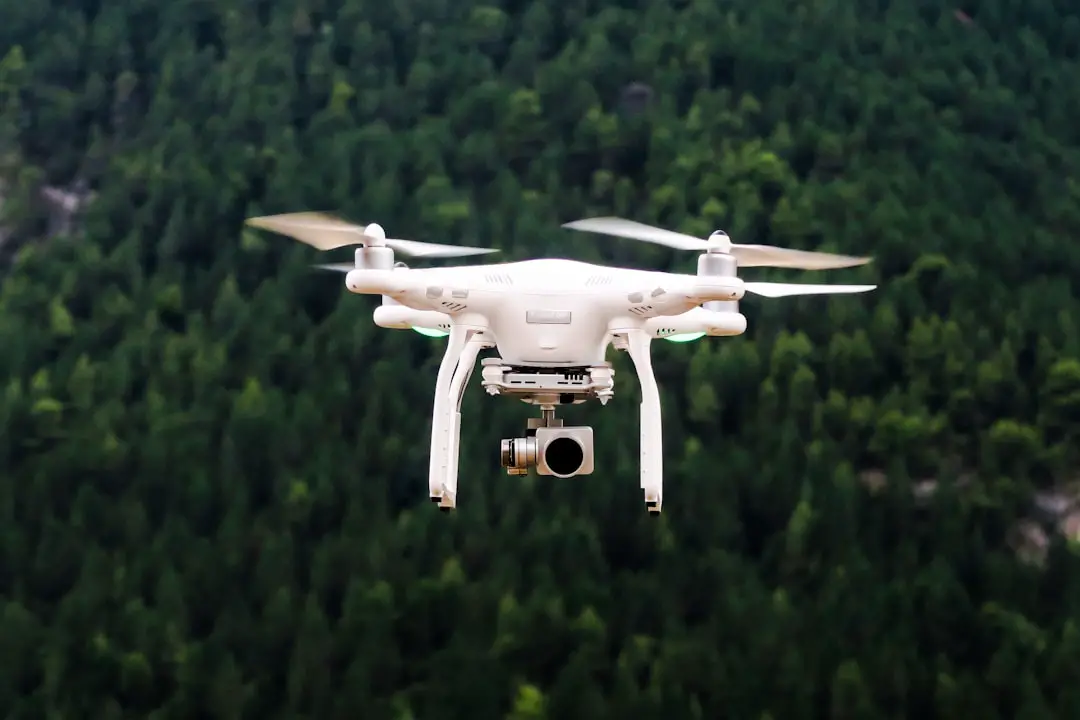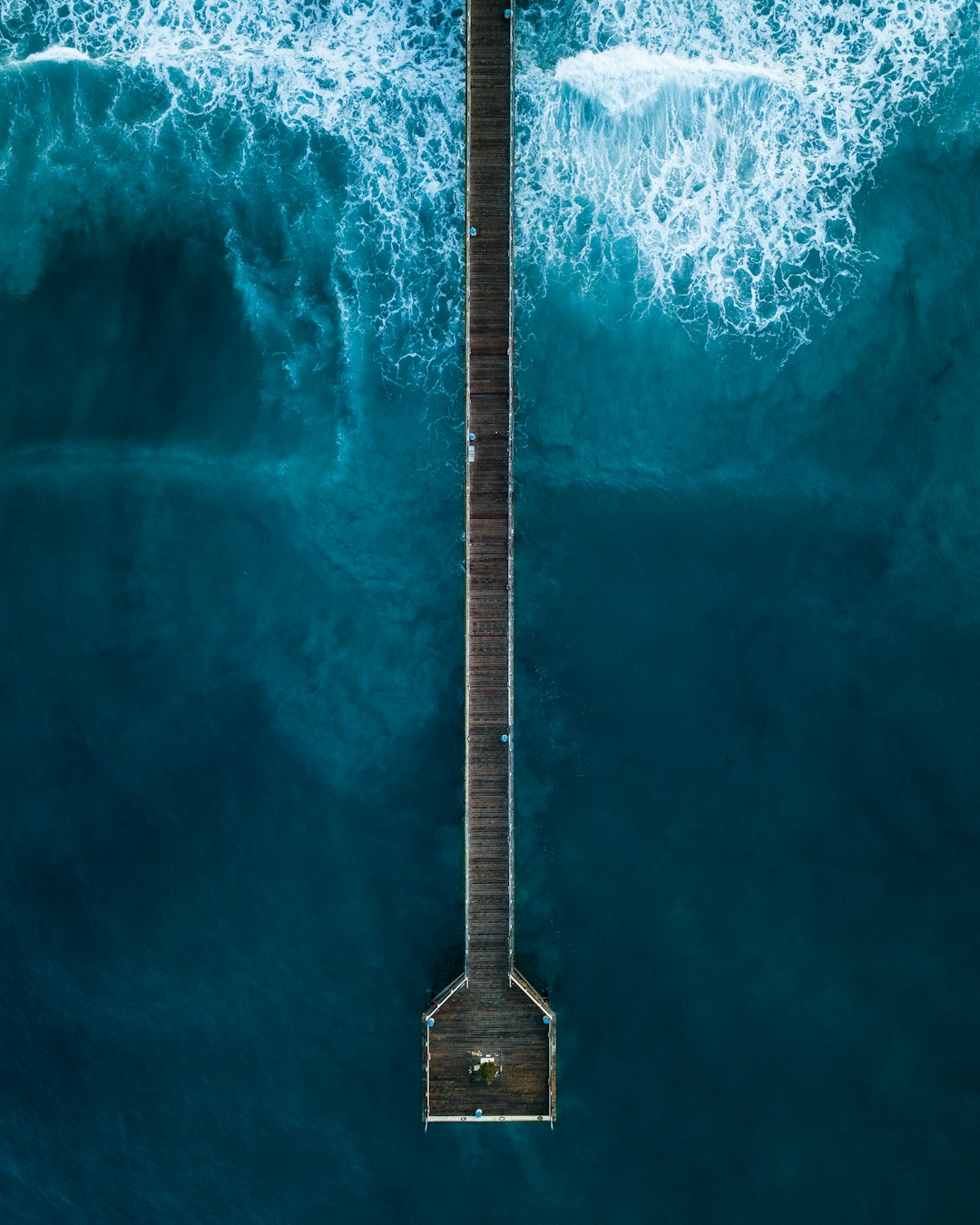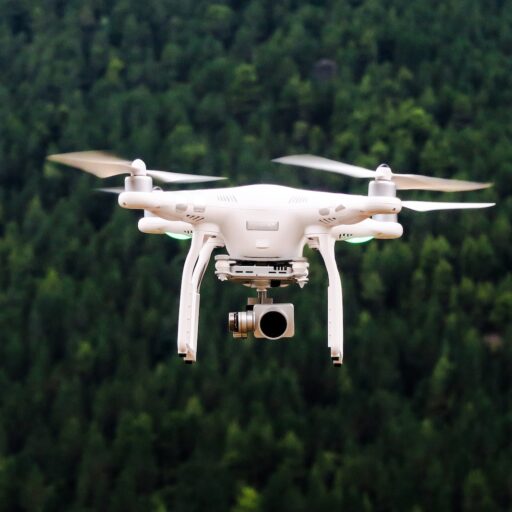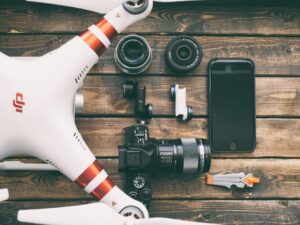Support our educational content for free when you purchase through links on our site. Learn more
How to Choose the Best Drone for You [2024]
Open your eyes to the world from above!
Have you ever wondered what it’s like to soar through the sky like a bird? With the advent of drones, that dream is now a reality. Drones have become increasingly popular in recent years, offering a unique perspective and endless possibilities for aerial photography, videography, and exploration. But with so many options available, how do you choose the best drone for you? Don’t worry, we’ve got you covered. In this comprehensive guide, we’ll walk you through everything you need to know to make an informed decision and find the perfect drone that suits your needs and budget.
Table of Contents
- Quick Answer
- Quick Tips and Facts
- Background and History of Drones
- Types of Drones
- Factors to Consider When Choosing a Drone
- FAQ
- Conclusion
- Recommended Links
- Reference Links
Quick Answer
Choosing the best drone for you depends on several factors, including your experience level, intended use, budget, and desired features. To make the right decision, consider the following:
- Determine your skill level: Are you a beginner or an experienced pilot?
- Identify your purpose: Do you want a drone for aerial photography, videography, racing, or recreational flying?
- Set a budget: How much are you willing to spend on a drone?
- Consider the features: Flight time, camera quality, flight range, and ease of use are important factors to consider.
Once you have a clear understanding of your needs and preferences, you can start exploring the different types of drones available in the market.
CHECK PRICE on: Professional Use Drones | Advanced Camera Drones | Amateur Camera Drones | Racing Drones | Basic Camera Drones | Toy Drones
Quick Tips and Facts
Before we dive into the details, here are some quick tips and interesting facts about drones:
- Drones, also known as unmanned aerial vehicles (UAVs), come in various shapes and sizes, ranging from palm-sized toy drones to professional-grade aerial platforms.
- The first recorded use of a drone dates back to 1849 when Austria attacked Venice with unmanned balloons filled with explosives.
- Drones are used in a wide range of industries, including photography, filmmaking, agriculture, construction, search and rescue, and even delivery services.
- The Federal Aviation Administration (FAA) regulates the use of drones in the United States, and it’s important to familiarize yourself with the local regulations and obtain any necessary permits or licenses before flying.
- Drones can be equipped with advanced features such as GPS navigation, obstacle avoidance systems, and even thermal imaging cameras.
- The battery life of a drone can vary significantly, ranging from a few minutes to over an hour, depending on the model and its intended use.
- The popularity of drones has led to the emergence of drone racing as a competitive sport, where pilots navigate their drones through challenging courses at high speeds.
Now that you have a basic understanding of drones, let’s explore their background and history.
Background and History of Drones

Drones have come a long way since their inception. Originally developed for military purposes, drones have now become accessible to the general public, opening up a world of possibilities for aerial exploration and creativity.
The history of drones can be traced back to the early 20th century when the first remote-controlled aircraft were developed. However, it wasn’t until the 1990s that drones started gaining popularity outside of military applications. Advances in technology, particularly in miniaturization and battery life, made it possible to create smaller and more affordable drones for civilian use.
Today, drones are used in a wide range of industries and have become an essential tool for photographers, filmmakers, and hobbyists alike. With advancements in camera technology, drones now offer high-quality aerial photography and videography capabilities that were once only possible with expensive helicopters or cranes.
Types of Drones
When it comes to choosing a drone, it’s important to understand the different types available and their intended uses. Let’s explore the various categories of drones:
Professional Use Drones
Professional use drones are designed for photographers, filmmakers, site assessors, and other professionals who require advanced features and high-quality footage. These drones are typically equipped with GPS, smooth flight adjustment, interchangeable gimbals, and extended battery life. They offer 4K footage and above, allowing professionals to capture stunning aerial imagery.
Product Examples:
| Drone Model | Flight Time | Range | Megapixels | Video Resolution |
|---|---|---|---|---|
| DJI Inspire 1 | 18 mins | 2,000km | 16MP | 4K 30fps |
| DJI Inspire 2 | 27 mins | 13,000m | 20MP | 5.2k 30fps |
| DJI Phantom 4 Pro | 30 mins | 13,000m | 20MP | 4k 60fps |
| Typhoon H Pro | 25 mins | 500m | 12MP | 4k 30fps |
Advanced Camera Drones
Advanced camera drones bridge the gap between professional and beginner drones. They offer features such as obstacle avoidance, return to home, and high-quality cameras, making them suitable for serious amateur photographers and business use. These drones provide excellent image and video quality without the complexity and high price tag of professional-grade drones.
Product Examples:
| Drone Model | Flight Time | Range | Megapixels | Video Resolution |
|---|---|---|---|---|
| DJI Phantom 4 | 28 mins | 2,000m | 12MP | 4k 30fps |
| DJI Phantom 3 Pro | 24 mins | 2,000m | 12MP | 4k 30fps |
| DJI Mavic Pro | 27 mins | 13,000m | 12MP | 4k 30fps |
| Typhoon Q500 4K | 25 mins | 500m | 12MP | 4k 30fps |
Amateur Camera Drones
Amateur camera drones are designed for beginners and those looking to enter the world of aerial photography. These drones offer basic technologies and low-resolution cameras, making them affordable and easy to use. While they may not provide the same level of image quality as professional or advanced camera drones, they are a great option for recreational flying and learning the basics of aerial photography.
Product Examples:
| Drone Model | Flight Time | Range | Megapixels | Video Resolution |
|---|---|---|---|---|
| Phantom 3 Standard | 25 mins | 500m | 12MP | 2.7k 30fps |
| Parrot Bebop 2 | 25 mins | 300m | 14MP | 1080p 30fps |
| DJI Spark | 16 mins | 1,900m | 12MP | 1080p 30fps |
| Yuneec Breeze | 12 mins | 200m | 13MP | 4k 30fps |
Racing Drones
Racing drones are built for speed, agility, and racing competitions. These drones are highly responsive and can reach speeds of up to 80mph. Racing drones are equipped with first-person view (FPV) systems that allow pilots to see the drone’s perspective in real-time through goggles or a monitor. They are ideal for drone racing enthusiasts or those looking to perform stunts and tricks.
Basic Camera Drones
Basic camera drones are entry-level drones designed for beginners in aerial photography. These drones offer good flying abilities and basic technologies, making them easy to operate and affordable. Some models may include features like collision avoidance or adjustable cameras, providing a balance between simplicity and functionality.
Toy Drones
Toy drones are entry-level drones designed for beginners to learn flying skills. These drones offer basic technologies and flying abilities, making them suitable for children and those looking for a fun and affordable way to experience drone flight. While toy drones may not have advanced features or high-quality cameras, they provide an excellent introduction to the world of drones.
Now that you have a better understanding of the different types of drones available, let’s dive deeper into the factors you should consider when choosing a drone.
Factors to Consider When Choosing a Drone
Choosing the right drone involves considering several factors that are specific to your needs and preferences. Here are some key factors to keep in mind:
Flight Time
Flight time refers to the duration a drone can stay in the air on a single battery charge. It’s an important consideration, especially if you plan to use your drone for aerial photography or videography. Longer flight times allow for more extended shooting sessions and greater flexibility in capturing the perfect shot. Keep in mind that flight time can vary depending on factors such as payload, wind conditions, and flight maneuvers.
Battery Life and Charging Time
Battery life and charging time go hand in hand with flight time. Drones typically use lithium polymer (LiPo) batteries, which provide a good balance between weight and energy density. It’s essential to consider the battery life of a drone and how long it takes to recharge the batteries fully. Some drones come with additional batteries or quick-charging capabilities, allowing you to extend your flight time and minimize downtime.
Flight Range
Flight range refers to the maximum distance a drone can fly from the remote controller before losing connection. It’s crucial to consider the flight range, especially if you plan to fly your drone in large open areas or capture footage from a distance. Keep in mind that flight range can be affected by factors such as interference, obstacles, and environmental conditions.
Camera Quality
If you’re interested in aerial photography or videography, the camera quality is a crucial factor to consider. Higher megapixels and video resolutions allow for more detailed and professional-looking footage. Look for drones with cameras that offer features such as adjustable settings, image stabilization, and the ability to shoot in RAW format for greater post-processing flexibility.
First Person View (FPV)
First Person View (FPV) is a feature that allows you to see the drone’s perspective in real-time through goggles or a monitor. FPV can enhance your flying experience and make it easier to capture precise shots or navigate through challenging environments. Some drones come with built-in FPV systems, while others require additional accessories or smartphones for live video streaming.
GPS and Navigation
GPS and navigation features can greatly enhance the flying experience and make it easier to control your drone. GPS allows for precise positioning, automatic return to home functions, and intelligent flight modes such as follow me or waypoint navigation. These features can be particularly useful for aerial photography or when flying in unfamiliar areas.
Obstacle Avoidance
Obstacle avoidance systems use sensors and cameras to detect and avoid obstacles in the drone’s flight path. This feature can be beneficial, especially for beginners or when flying in crowded areas. Obstacle avoidance can help prevent accidents and collisions, providing an added layer of safety and peace of mind.
Portability and Size
The portability and size of a drone can impact its ease of use and convenience. If you plan to travel with your drone or carry it around frequently, consider a compact and lightweight model that can easily fit in a backpack or carry-on luggage. However, keep in mind that smaller drones may sacrifice certain features or flight capabilities compared to larger models.
Ease of Use
For beginners or those new to drones, ease of use is an essential factor to consider. Look for drones that offer intuitive controls, easy setup processes, and beginner-friendly flight modes. Some drones come with features like automatic takeoff and landing, one-touch controls, or even built-in tutorials to help you get started quickly and safely.
Price
Price is often a determining factor when choosing a drone. Drones can range in price from under $100 for entry-level models to several thousand dollars for professional-grade drones. Set a budget that aligns with your needs and expectations, and consider the value you’re getting for your money. Keep in mind that more expensive drones often come with advanced features, better camera quality, and longer flight times.
Now that you have a better understanding of the factors to consider when choosing a drone, let’s address some frequently asked questions.
FAQ

How do I find the right drone for me?
Finding the right drone for you involves considering your experience level, intended use, budget, and desired features. Start by determining your skill level and identifying your purpose for using a drone. If you’re a beginner, consider starting with an entry-level drone that’s easy to fly and affordable. If you’re an experienced pilot or a professional photographer, you may want to invest in a more advanced drone with high-quality cameras and advanced features. Set a budget that aligns with your needs and explore the different types of drones available to find the perfect fit.
Read more about “The Ultimate Guide to the Best Drones for Beginners in 2023 …”
Which drone is best for me?
The best drone for you depends on your specific needs and preferences. Consider factors such as your experience level, intended use, budget, and desired features. If you’re a beginner, look for drones that are easy to fly and come with beginner-friendly features. If you’re interested in aerial photography or videography, prioritize drones with high-quality cameras and advanced imaging capabilities. Research different models, read reviews, and compare specifications to find the drone that best suits your needs.
What is the #1 best drone?
The “best” drone is subjective and depends on individual needs and preferences. There are several top-rated drones on the market, each with its own strengths and features. Some popular options include the DJI Mavic Air 2, DJI Phantom 4 Pro, and Autel Evo II. These drones offer advanced features, high-quality cameras, and excellent flight performance. However, it’s important to consider your specific requirements and budget when determining the best drone for you.
Read more about “The 5 Best Professional Drones of 2024: Aerial Adventures with Drone Brands”
Which drone to buy for the first time?
For first-time drone buyers, it’s recommended to start with an entry-level drone that’s easy to fly and affordable. Some popular options for beginners include the DJI Mini 2, Ryze Tello, and Holy Stone HS720. These drones offer intuitive controls, stable flight performance, and beginner-friendly features. Starting with a beginner drone allows you to learn the basics of flying and gain experience before moving on to more advanced models.
Conclusion

Choosing the best drone for you requires careful consideration of your experience level, intended use, budget, and desired features. Whether you’re a beginner looking for a fun and affordable way to explore the world of drones or a professional photographer in need of high-quality aerial footage, there’s a drone out there that’s perfect for you. By understanding the different types of drones available and considering the factors we’ve discussed, you can make an informed decision and find the drone that suits your needs and budget.
Remember, flying a drone is not just about capturing stunning footage or exploring new perspectives—it’s about unleashing your creativity and experiencing the world from a whole new angle. So, what are you waiting for? Take to the skies and embark on your own aerial adventure with the perfect drone for you!
Recommended Links
- CHECK PRICE on: Professional Use Drones | Advanced Camera Drones | Amateur Camera Drones | Racing Drones | Basic Camera Drones | Toy Drones
- Shop DJI Drones on: Amazon | Walmart | eBay
- Shop Autel Drones on: Amazon | Walmart | eBay
- Shop Holy Stone Drones on: Amazon | Walmart | eBay




